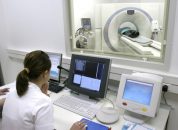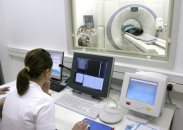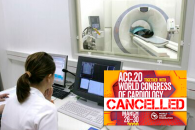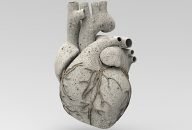Early detection of coronary artery disease (CAD) using computed tomography (CT) and calcium score (CAC) might help plan prevention strategies years in advance. This study used CT to determine the prevalence and characteristics of atherosclerosis in the general population. Non-contrast images were scored for CAC. After that, all images with atherosclerosis potential were assessed segment…
CT and Angiography Agreement in Patients from the ISCHEMIA Trial
Computed tomographic (CT) angiography showed a high degree of agreement with conventional angiography to detect significant coronary artery disease and rule out left main disease. This imaging study was done on a group of patients before their randomization in the ISCHEMIA trial. Data are soon to be published in JACC Cardiovascular Imaging and add plenty…
Regression of High-Risk Plaque with Lifestyle Changes
Diet and lifestyle intervention in addition to optimal medical therapy can slow down plaque building and even reduce plaque volume compared against optimal medical treatment (OTM) alone. Diet and lifestyle intervention are amongst the most important strategies to manage coronary artery disease. However, its direct impact on atherosclerosis remains unclear. Atherosclerosis plaque building is associated…
Computerized Tomography as First Coronary Study?
According to this new document recently published in JACC, a computerized tomography (CT) coronary angiography should be the first study done to diagnose a stable coronary artery disease. A multidisciplinary group of experts recommends using computerized tomography as first-line diagnosis in stable patients. According to these professionals, guidelines should be updated soon. Given the accruing…
Differences in Plaque Progression Depending on its Characteristics
The pattern of growth for each plaque differs according to the presence of certain risk factors. Atheroma volume at baseline was the most important predictor of plaque developing into obstructive lesions, as opposed to other characteristics historically considered as “dangerous.” The aim of this study was to analyze whether the pattern of non-obstructive lesion progression…
Detection of Late Complications After EVAR
This work addressed the occurrence of complications after endovascular aortic aneurysm repair (EVAR) for the treatment of infrarenal abdominal aortic aneurysms in a cohort of 454 patients with a 5.2-year follow-up. About 25% of patients experience complications of some kind. As opposed to other studies, here, the vast majority of those complications were asymptomatic and had…
Virtual ACC 2020 | “Dangerous” Plaques by CT Effectively Predict Infarction
This post-hoc analysis of the SCOT-HEART shows low-attenuation plaque burden might successfully predict events. A greater number of low-attenuation plaques seems to be synonymous with greater risk which makes them better predictors than clinical scores, coronary calcification and stenosis degree. IVUS, CT and carotid ultrasound are the accepted tools to diagnose plaque burden and predict…
Calcium Scoring: “Location” Seems to Be More Important than “Percentage”
The presence of a high percentage of calcium in the left main coronary artery is independently associated with a 20–30% greater risk for cardiovascular and all-cause death in asymptomatic adults. This highlights the fact that calcium location, and not only amount, is important. Calcium scoring reports from computerized tomography (CT) usually inform only that: how…
EuroPCR 2018 | SYNTAX III REVOLUTION: Excellent Correlation Between Angiography and Computerized Tomography in Patients with Left Main and Multivessel Disease
In patients with left main or three-vessel coronary disease, heart team decisions on revascularization strategy (angioplasty or surgery) may be made based solely on noninvasive computerized tomography (CT) angiography, since there is great correlation between its results and those determined by conventional angiography. For the SYNTAX III REVOLUTION study, Dr. Serruys and his colleagues randomized…
Post EVAR Contrast Enhanced Ultrasound Based Follow Up Reduces CT by 90%. Is It Safe Though?
This four-year retrospective analyzis has shown that contrast enhanced ultrasound based follow up protocol post endovascular aortic repair is safe and effective. Aneurysm related mortality, reintervention rate, sac retraction and endoleak detection resulted similar to that of CT based follow up protocols. In this study, doppler and enhanced contrast ultrasound were the main follow up…
- 1
- 2









